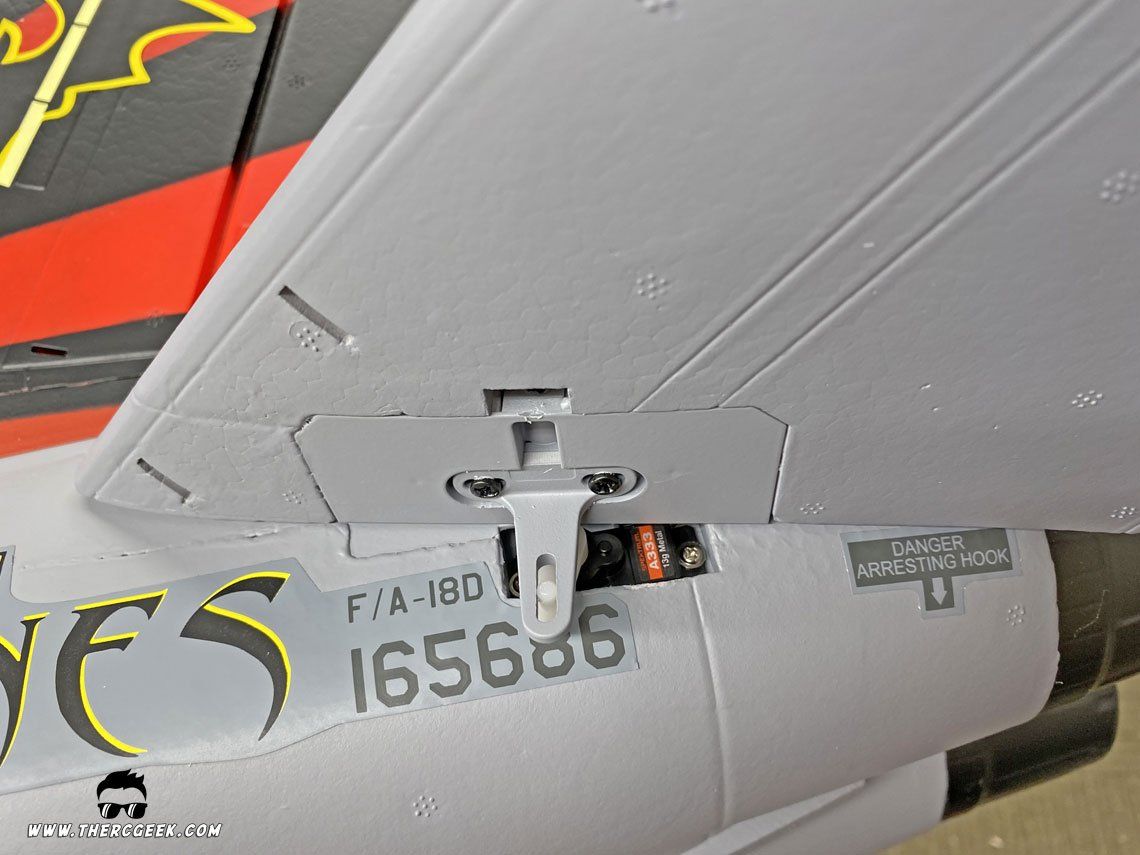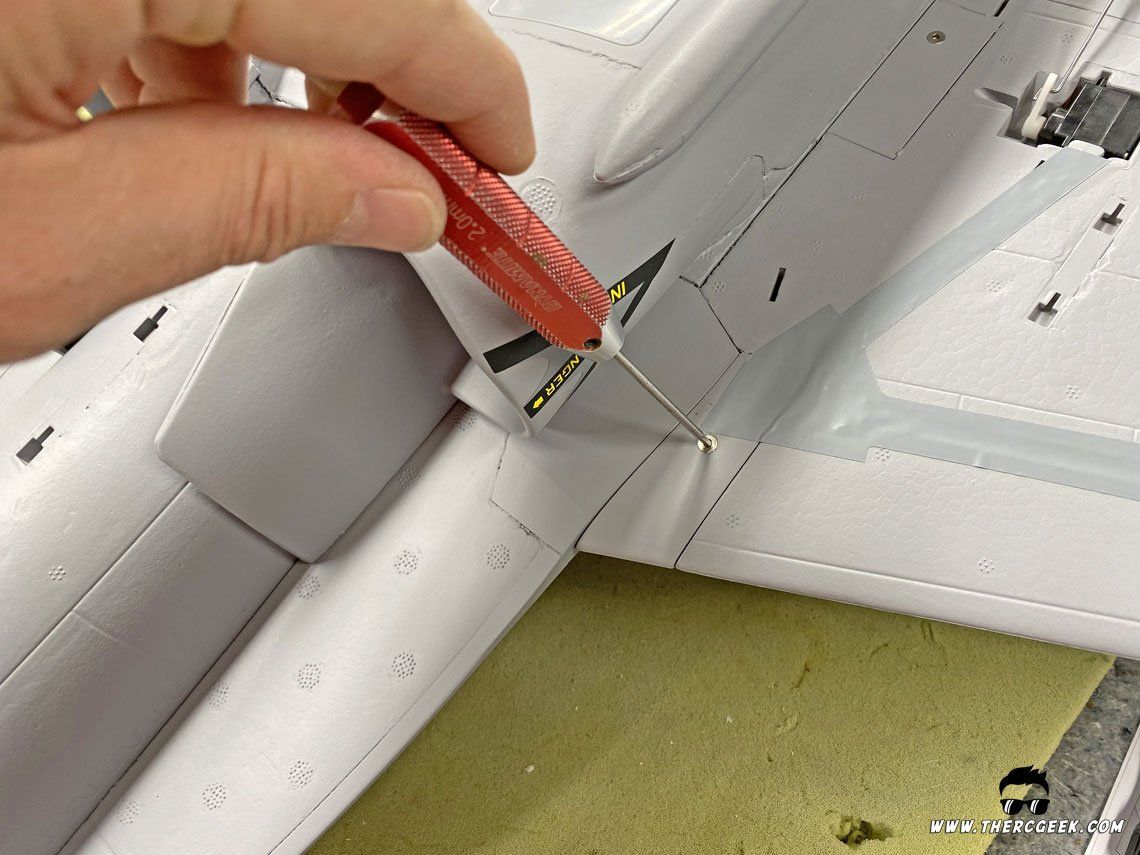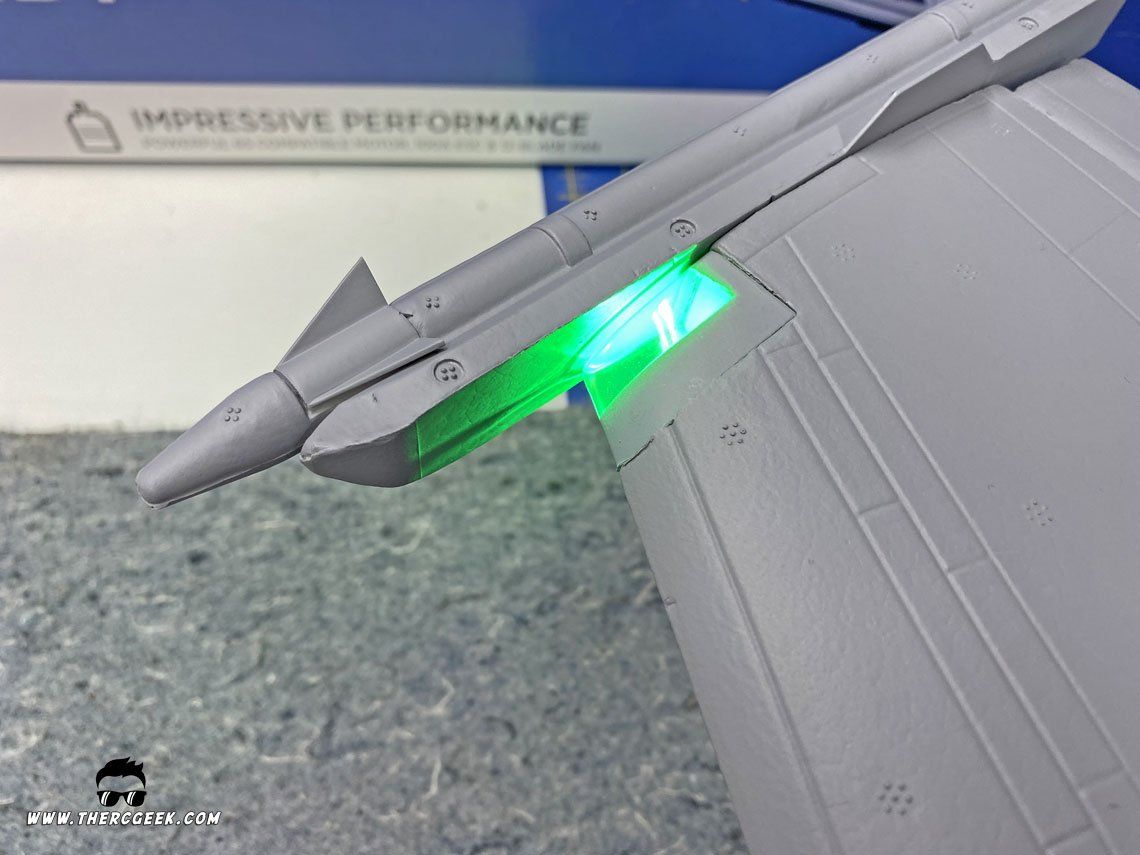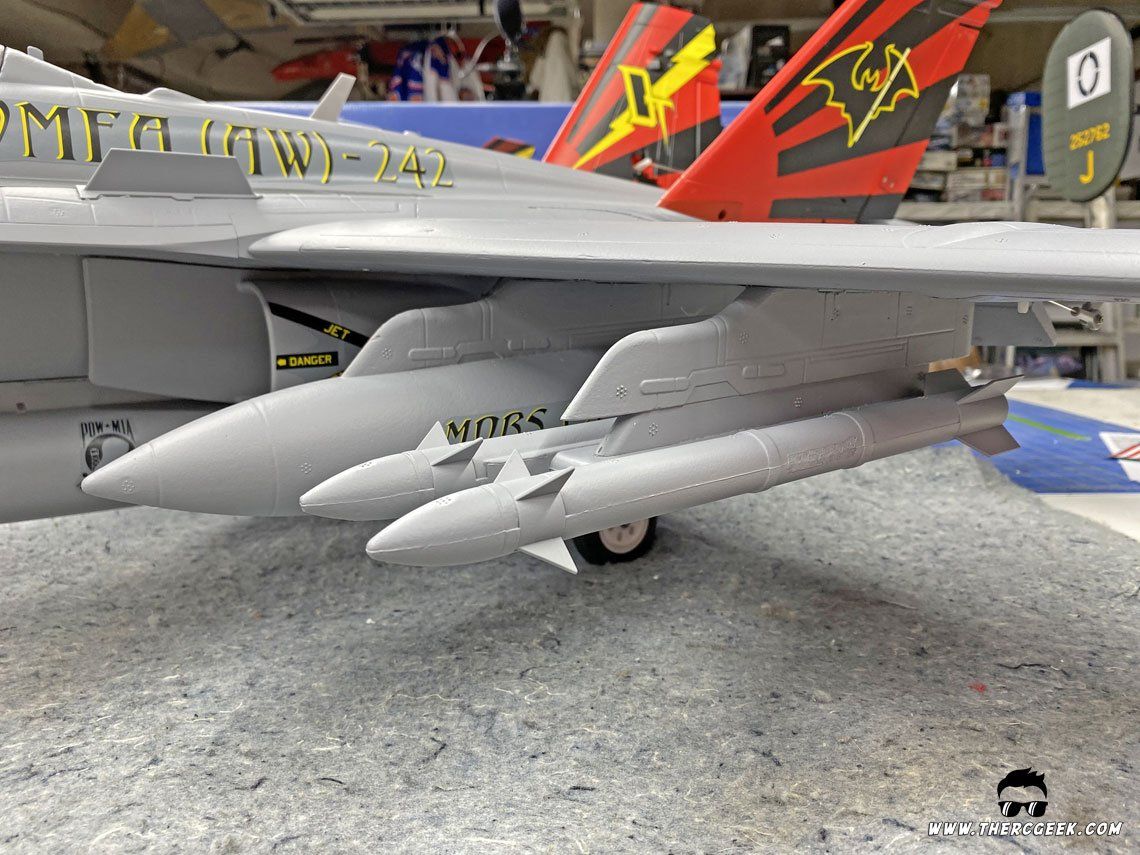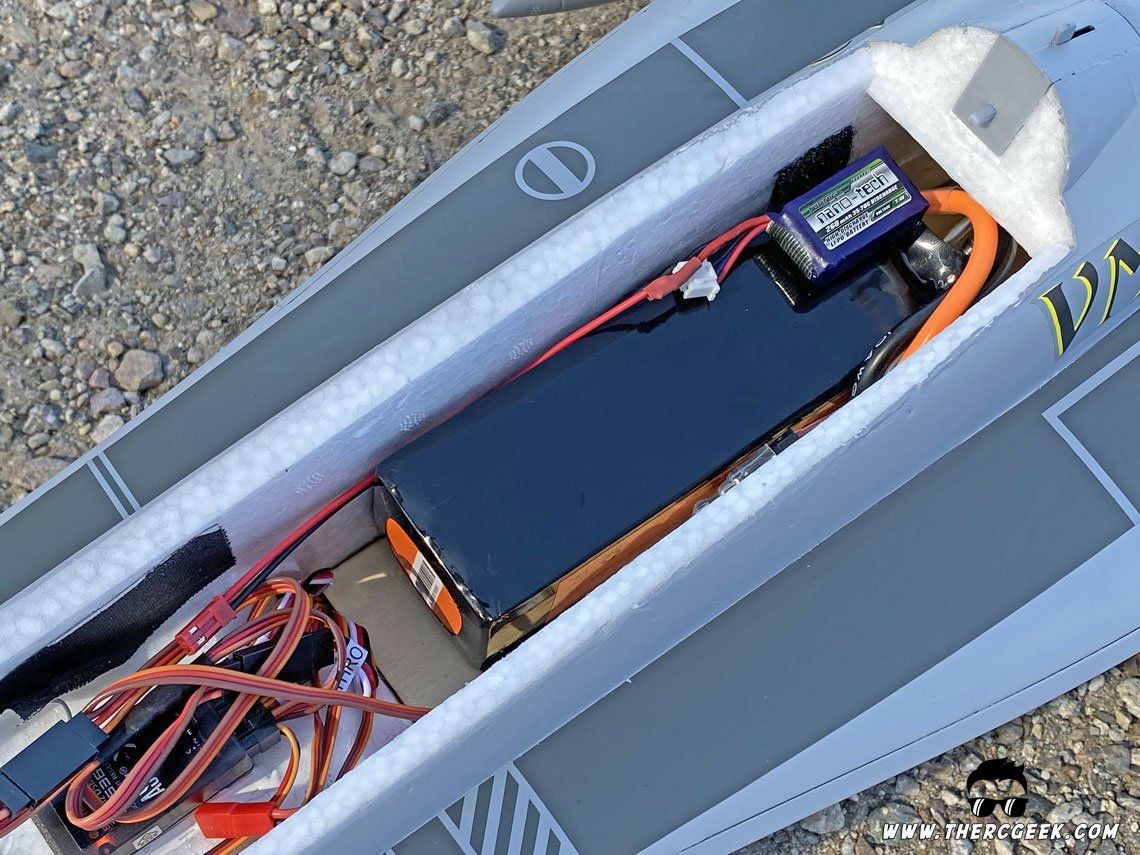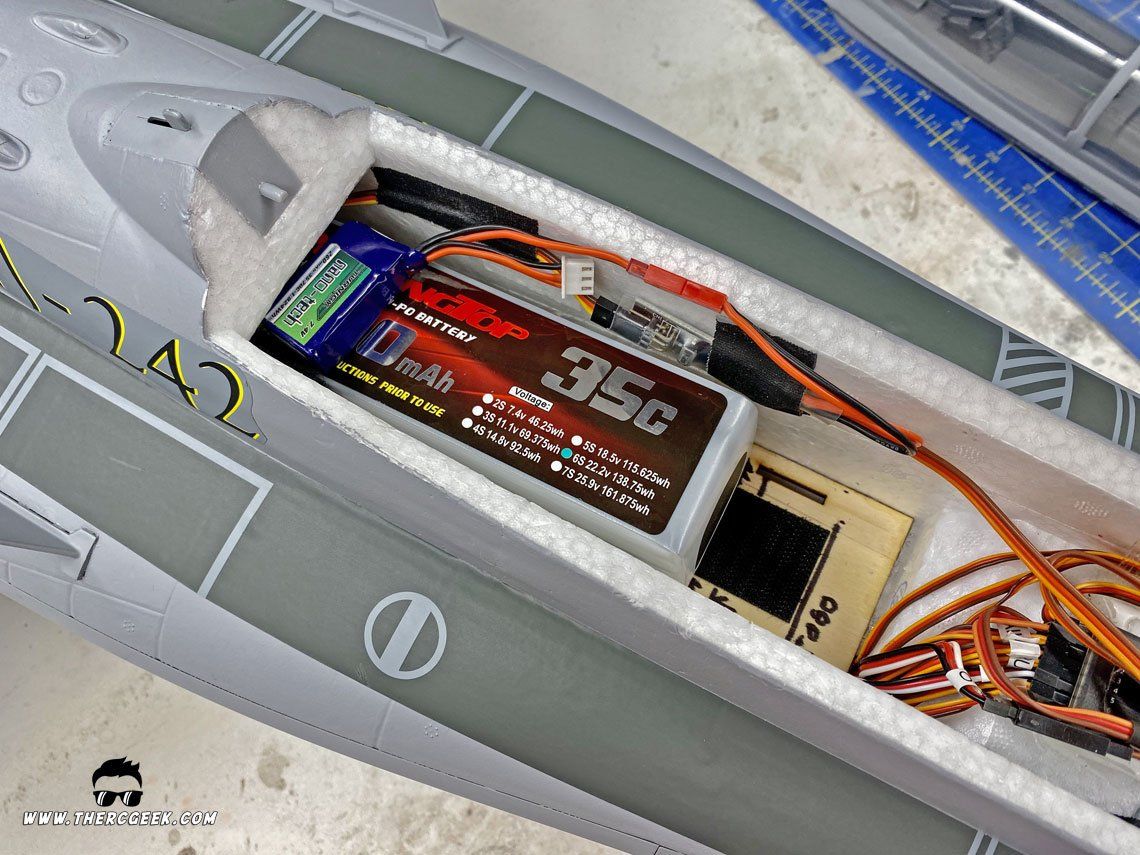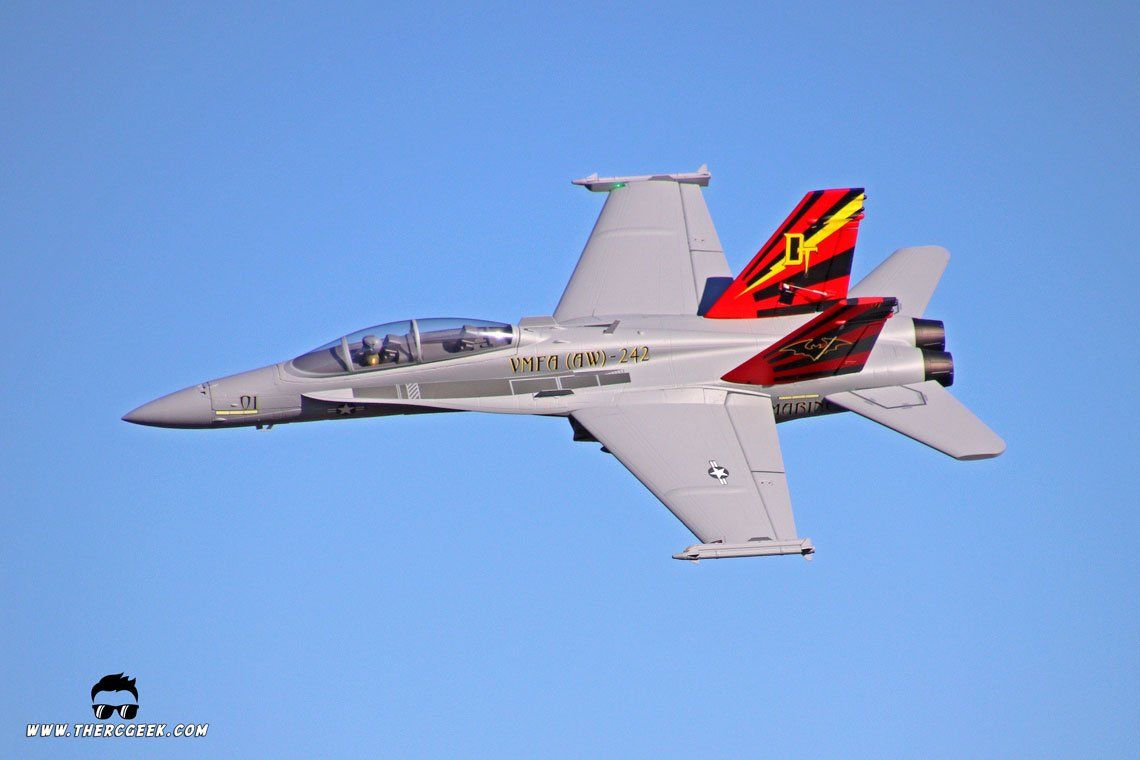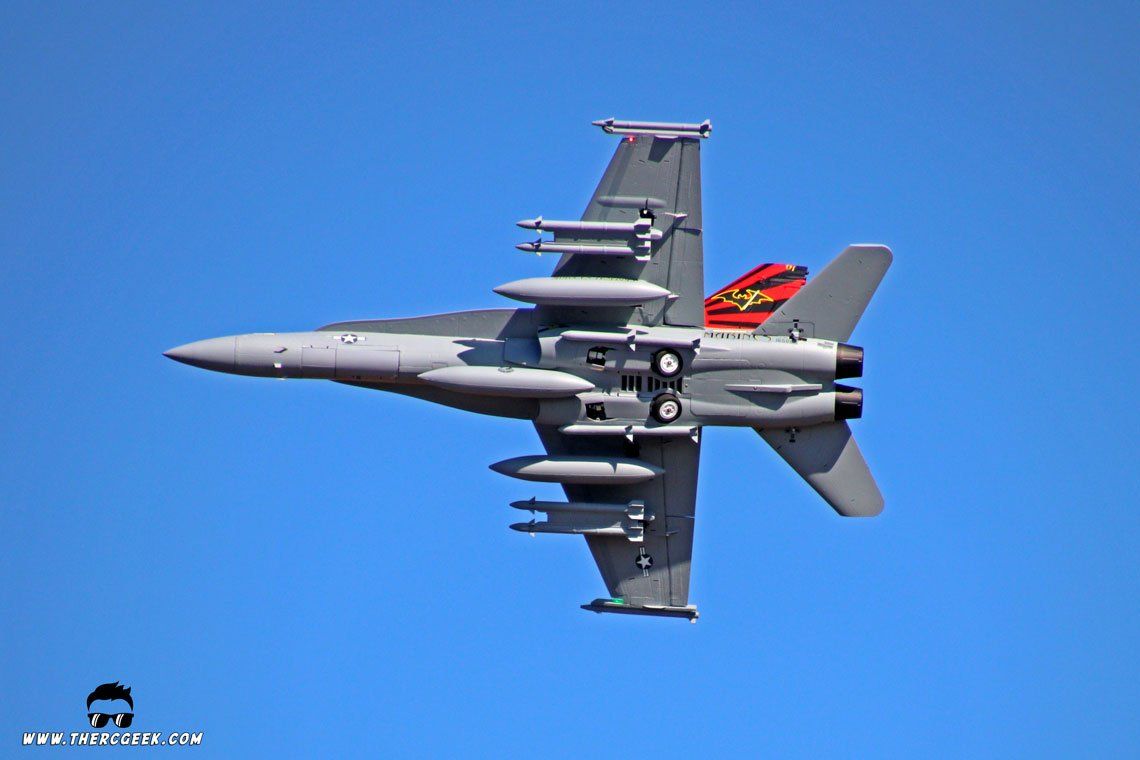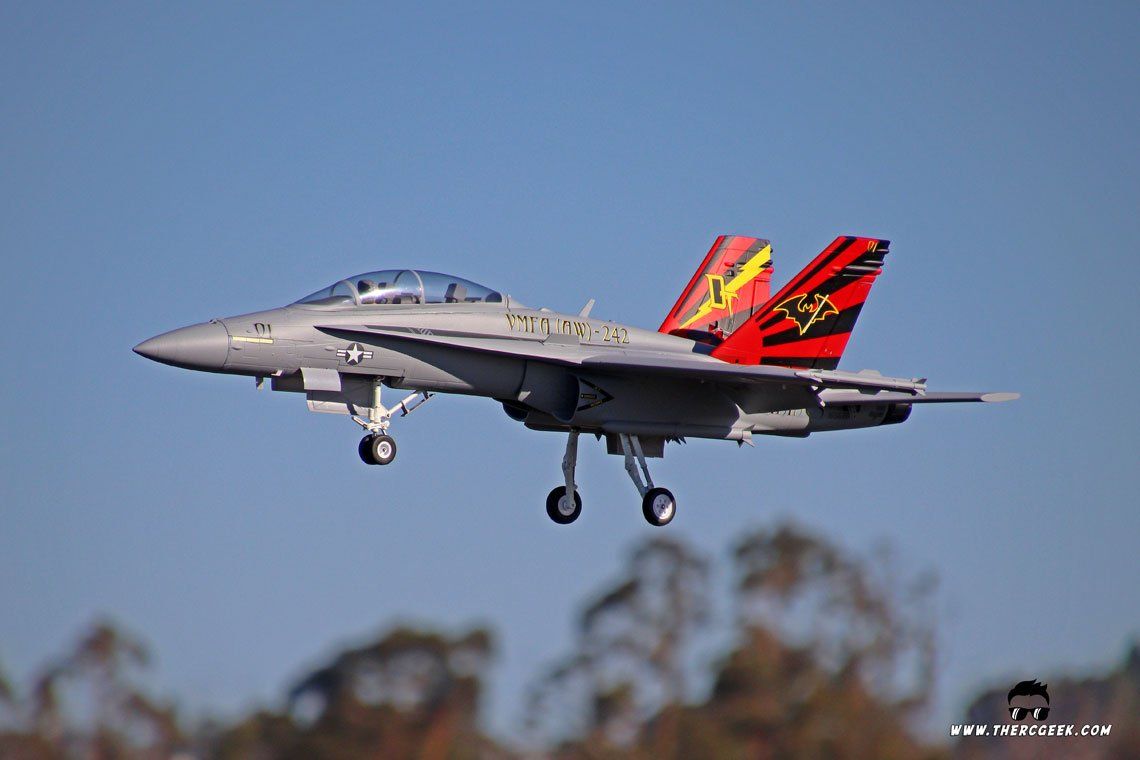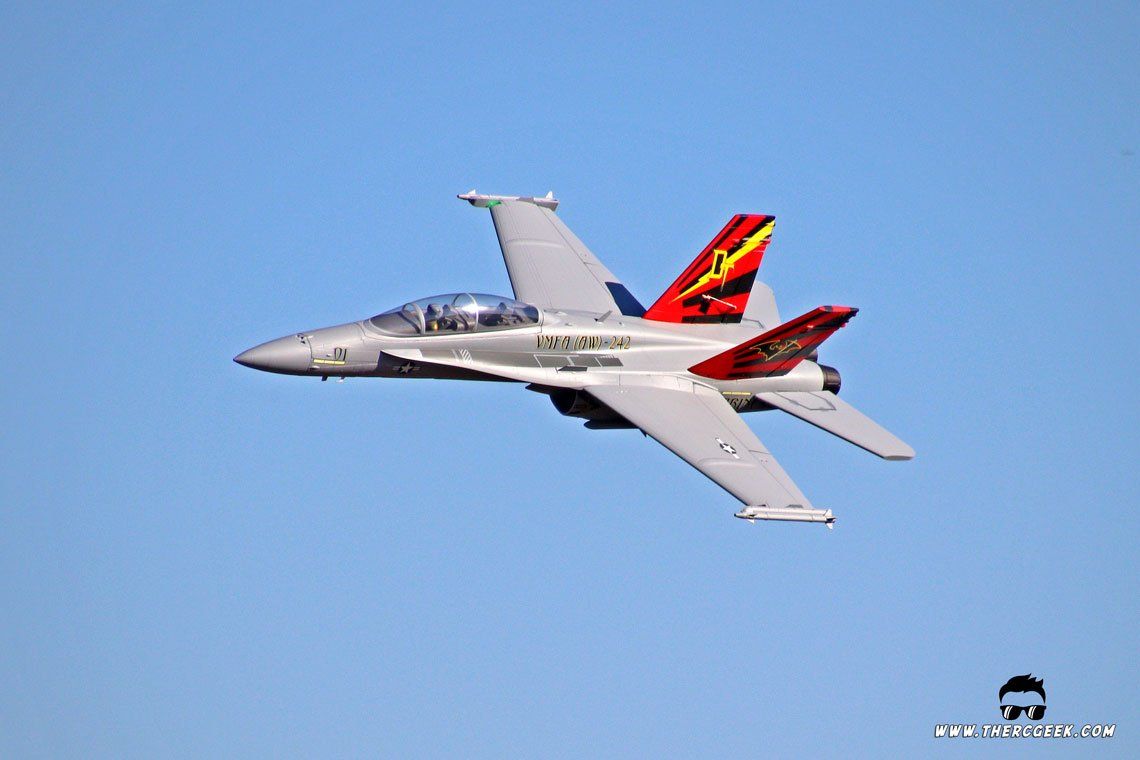The RC Geek Blog
By: Chris Wolfe
E-flite's Legacy Bug…Is it swarm in here?
The F-18 Hornet has been the cornerstone of the Navy fleet for decades, not to mention has been the performance aircraft for the US Navy's Blue Angels since 1986. So, as an airplane, it's always been extremely popular. I mean, what's not to like really? There have been a number of F-18 models through the years and the challenge in making it as an RC model has always been the landing gear. The main gear of the F-18 are so distinctive, it truly is one of the defining features of the airplane, but getting them made well was always a challenge in years past (n recent years there have been some absolutely incredible turbine models that have come to market). Also, if not executed well, it can make ground handling challenging.
When I saw E-flite's F-18 Hornet and the incredibly scale landing gear on it, I was excited! They got not only the look of the gear correct, but they also got the correct teeter angle which helps place the wheels a bit further away from the fuselage. If they had spent that much attention to detail on the landing gear, I could only hope that the rest of the airplane was just as well thought out. Well, I'm happy to report that this is indeed a very well-engineered and well thought out model that also flies extremely nicely! There are some things to be aware of regarding takeoff (especially on your maiden flight), but with the right setup and awareness, it's not a problem at all and you'll have a really nice flying EDF on your hands.
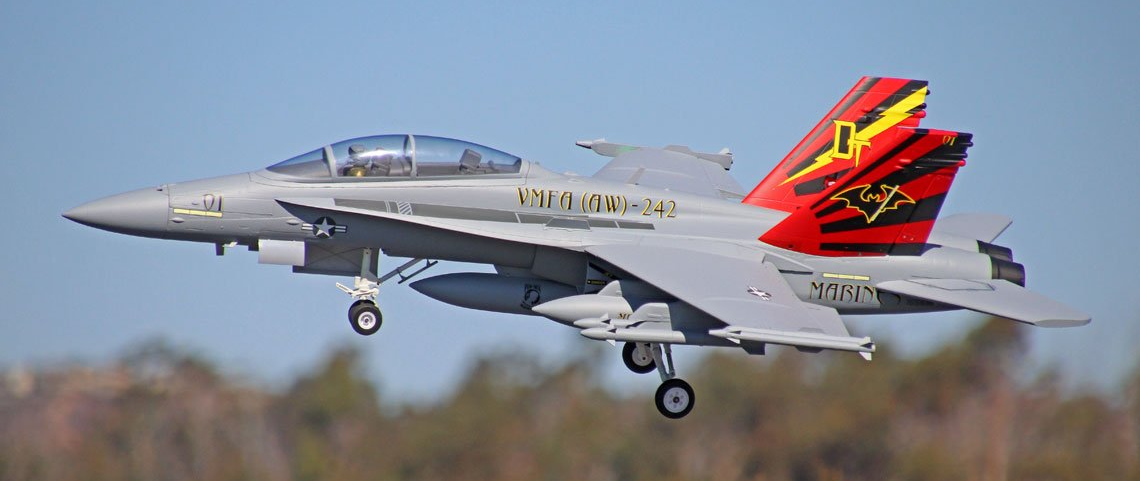
AIRCRAFT ASSEMBLY NOTES
The E-flite Hornet arrived nicely packed in a good sized box and includes with it a full complement of external tanks and stores which is nice. E-flite has really simplified the airplane down into the major components for assembly basically requiring only the tails and wings to be added for full assembly. As I hinted to earlier, the model is very well engineered which makes the assembly quite simple. I did have one alignment issue on one of the vertical stabs for some reason being unable to get one of the bolts to grab the threads in the fuselage. A quick run through the problematic mounting hole in the vertical stabilizer with my drill to open the hole slightly and I was able to remedy that pretty simply.
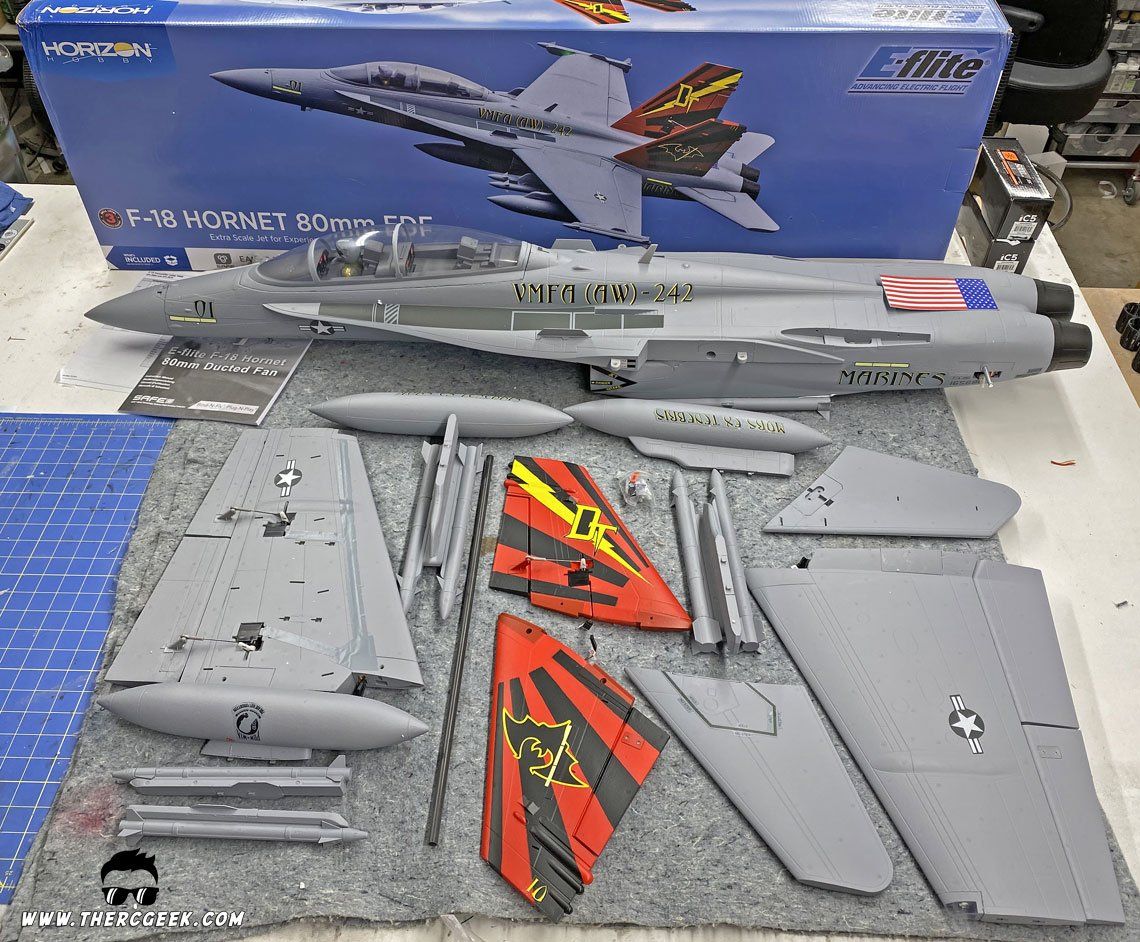
With the airplane assembled and on the bench, it really looks the part beautifully and the landing gear are really quite incredible! E-flite has characterized the shape of the airplane extremely well and I like the paint scheme that is on it personally. This F-18 really is ripe for some weathering! Also, it is worth noting that the leading edge extension has a hard plastic lining along the edge which really helps keep it from getting chewed up. The E-flite F-16 featured this as well.
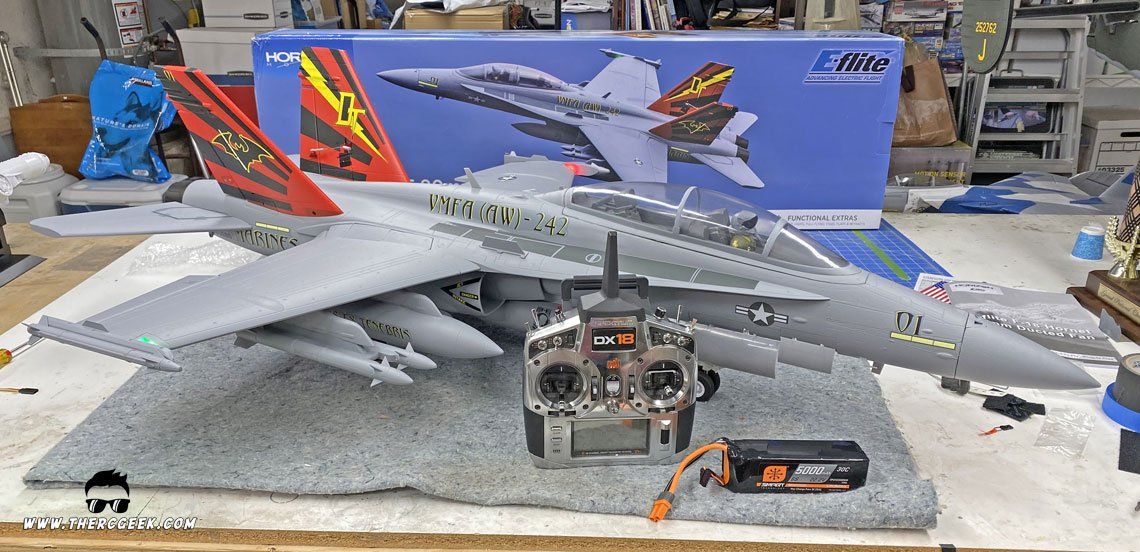
And of course, the landing gear…they're sick! I'm a sucker for scale gear and E-flite nailed these. They look right and they function extremely well. The mains do bottom out on the ground which is intentional as on the F-18 if the springs aren't setup correctly, ground handling can be tricky during takeoff. This helps keep it stable on the ground. That said, it is an F-18 which means narrow gear track, so don't be surprised at scraping a wing tip or two (I've scraped three! :p ). Also, large amounts of steering inputs during takeoff will have the airplane swaying on the gear a bit…every F-18 model I've seen fly has done this, so just something to be aware of when setting your rates.
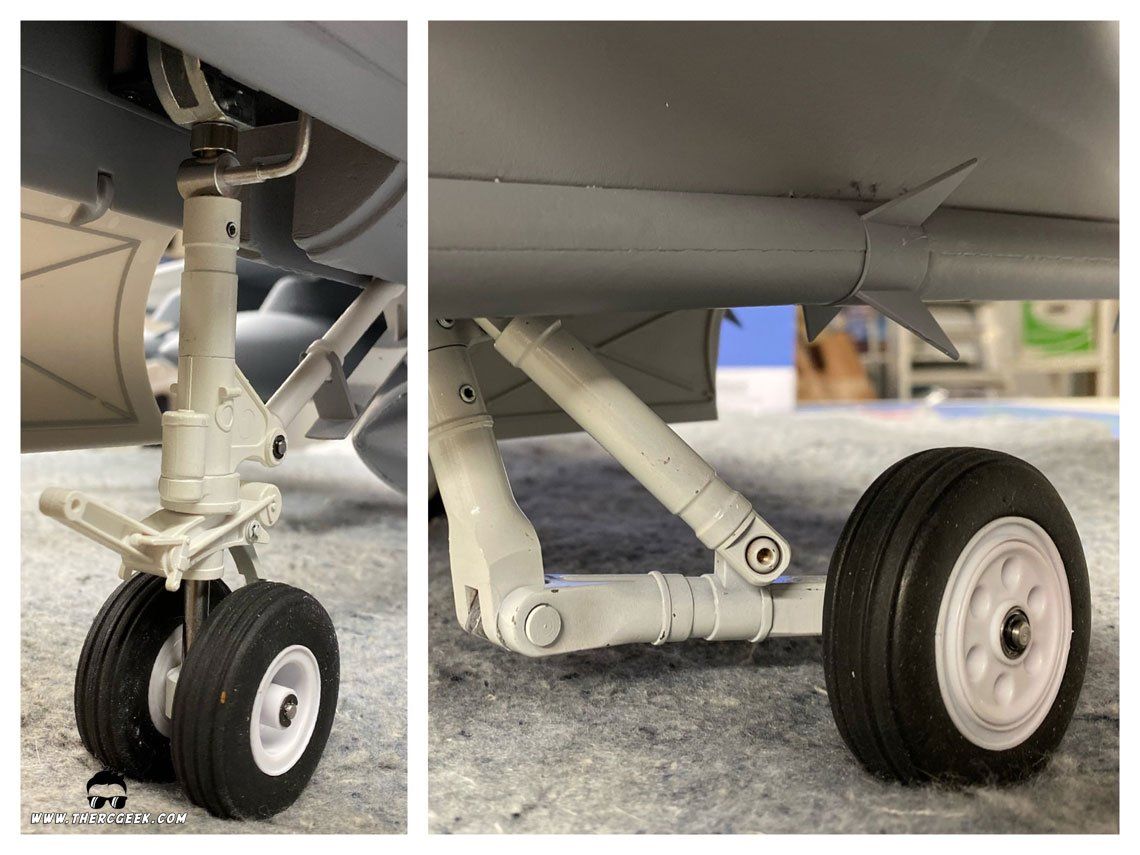
AIRCRAFT SETUP & CG
For the aircraft setup, this is the bind and fly version of which means that it includes SAFE select. I have a previous discussion on setting that up here should you want to know more about that. The thing to keep in mind is that there are two bind procedures. In my case here, I didn't want SAFE on, so I simply bound it normally for SAFE off.
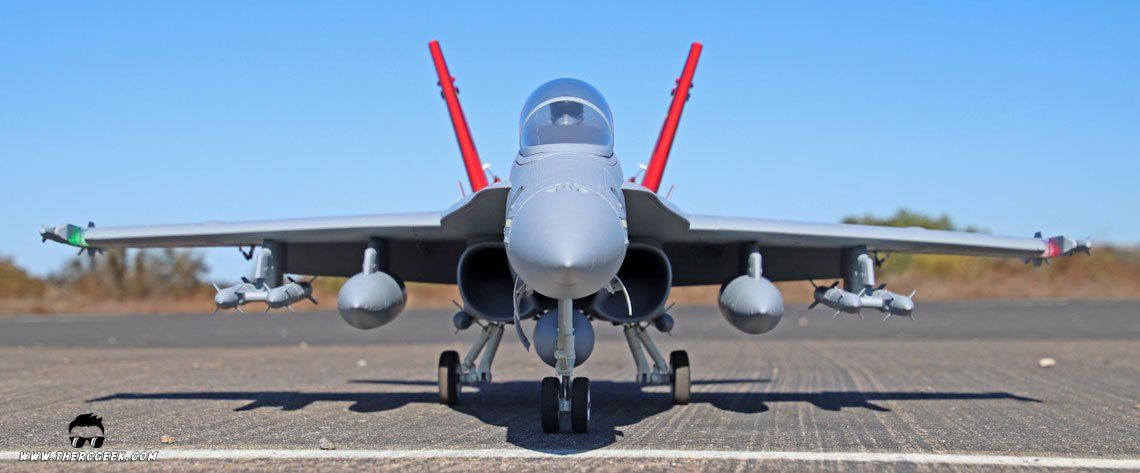
On the control surface setup, I found that most of the control recommendations were quite good, though I found the elevator to be a bit low for my taste. So, through flying the airplane here's what I honed in on for control throws. I would like to play with the control setup in the future to try something a little more scale with tailerons and full span flaps like I did with the Freewing F-14. That will come in a separate video and article if that happens.
- Elevator - 22mm up and down with 8% expo
- Aileron - 10mm up and down with 5% Expo
- Rudder - 10mm left and right with 20% expo to desensitize the steering
- Flaps - 30mm half flap with 1mm up elevator mix and 45mm full flap with a 3mm up elevator mix
In terms of the CG, I'm flying the airplane closer to the aft CG recommendation in the manual. This equates to 75mm as measured from the wing leading edge root aft right at the leading edge extension. The airplane flies great there and lands nicely. It's important to note that the airplane does require a bit more of an elevator input for takeoff rotation than other aircraft. Taking off with flaps does help which I would recommend only after you have trimmed the airplane out in flight in that configuration. Also, I added a small 1/16" shim to the nose gear retract to raise the nose slightly too which helped a little as well. Ultimately this additional elevator input is a result of the main gear being in the scale location and the further distance between the CG and the main gear tires as a result. In the air, an elevator input essentially rotates the airplane around the CG. However, on the ground, the airplane rotates around the main gear tires, so the further away the tires are from the CG (i.e. closer to the tail), the shorter the lever arm the tail has which means the tail has a lower mechanical advantage to generate a pitch rotation. Based on that, the elevator needs to impart a greater force to counteract that shorter lever arm, hence a little more deflection. As mentioned though, lengthening the nose slightly and taking off with flaps both helped the airplane rotate a little easier.
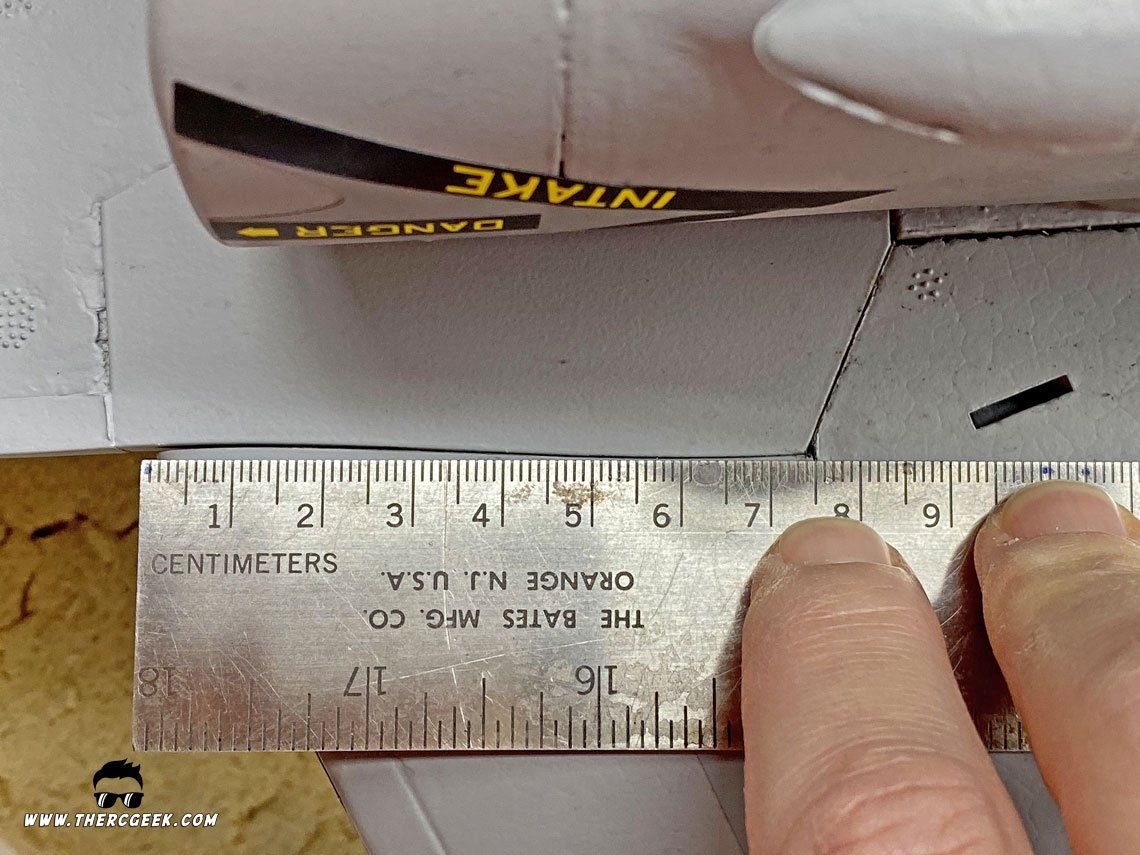
For battery, my first few flights were with a Spektrum 35c 5000 mah SMART pack which worked great. However, the airplane chewed up that capacity rather quickly (timer was set at 3:10 minutes). In the process, I discovered that a Roaring Top 6250 mah pack fit perfectly into the battery area without any modification. With the 6250 mah pack, my timer is set at 3.5 minutes which gives plenty of reserve flying the airplane hard and actually gave it a touch more speed also.
FLYING THE E-FLITE F-18 HORNET 80mm EDF
The E-flite F-18 Hornet is a great flying airplane that feels like the scale jet that it is in the air. What I mean is that the response, the feel, everything the airplane does gives you a sense and feel of flying a larger scale jet fighter. The overall performance is quite representative of the full scale airplane as the E-flite F-18 has good overall performance (not to mention really looks the part well in the air). The airplane is quite responsive throughout its full envelope and it's really fun to put it through its paces pulling maneuvers indicative of the full scale airplane. I found that the airplane does want to cruise with some speed behind it, so that's where the larger capacity battery does help with the flight times. I was especially surprised to find that the airplane knife edges quite excellently!
This has been touched on a little previously, but it should be noted that F-18s as a whole have a fairly unique ground handling during takeoff. Large rudder inputs will result in the airplane rocking left to right on its gear, so most certainly be aware of that and tune your rates and expo accordingly. Also, flaps are definitely recommended for landings to help slow it down on the approach and touchdown. I found that keeping some power all the way to the ground really helped the airplane land and settle nicely. Cutting the throttle in the flare would otherwise tend to cause the airplane to drop in harder.
The airplane was flown both with and without the external stores and as a whole the performance was similar between the two, though the clean configuration was notably quicker. The airplane did require about a dozen clicks or so of up trim to trim the airplane with the full stores configuration. The airplane really looks good with the stores on, but truth be told, it's not likely that I'll fly the airplane with full stores regularly. Interestingly enough, they're not that noticeable as you fly the airplane nor do they help with the visual either. So, that combined with the reduced top speed means that I'll probably fly it clean most of the time.
FINAL THOUGHTS
The E-flite F-18 Hornet really is a nicely executed foam jet. It is well engineered and it flies extremely nicely…and let's not forget those landing gear are sick! A nice large battery fits in the battery bay as well, so decent enough flight times can be obtained as well. There are a couple things to keep in mind on this airplane when it comes to takeoff, but as long as you are aware, then you can be prepared for it on the maiden and be rewarded with a really fun flying airplane. Now, where's my blue angel blue paint?? ;) Until next time, I'll see you at the field!
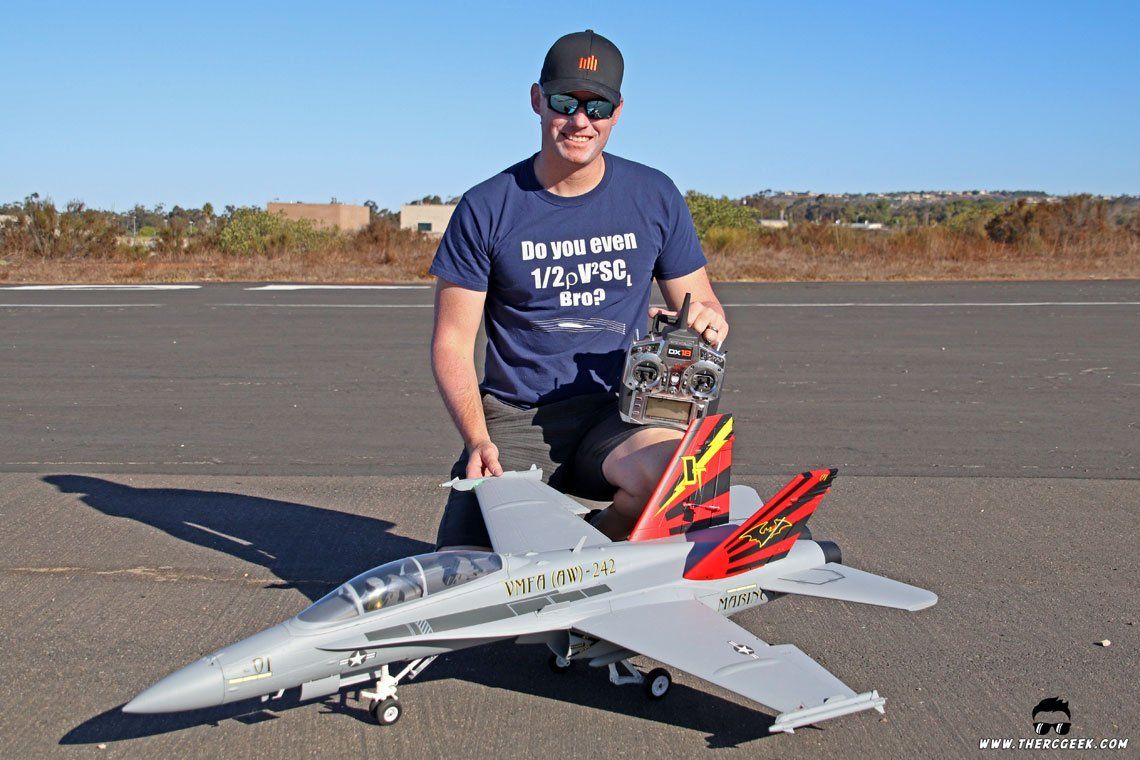
The RC Geek Blog is your place to learn about all aspects of the RC hobby. Learn to build, design, drive or fly that RC project you’ve always wanted to build, but have been intimidated to try. This blog is here to help you on your journey and provide tips and tricks as you go! My hope is to inspire builders both experienced and new! So, welcome, please look around, it’s an exciting beginning! I’m currently documenting my latest competition scale RC jet build, a Mark Frankel F4D Skyray, along with some other fun tips and videos. If you can’t find what you’re looking for on this front page, click on any of the categories to the right and it will show just posts related to those categories. Please feel free to add comments and/or contact me directly if you have questions, I’m here to help! And don’t forget to check out my YouTube Channel, I post new videos every week!
Subscribe To Our Blog Now








